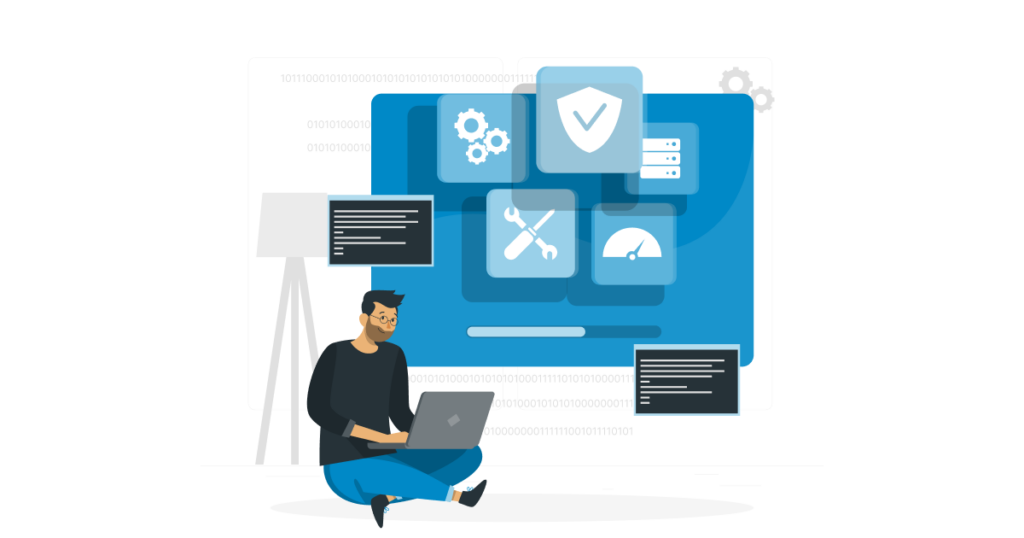Introduction
Containerd offers a lightweight container runtime that handles the essential tasks of pulling, storing, and running containers. It provides a minimalist solution, appealing for Kubernetes environments where efficiency and performance are crucial. But beneath its streamlined surface lies a complex ecosystem that demands careful planning and maintenance.
This blog is geared for platform engineers, DevOps professionals, and virtualization ops teams, guiding them through the essential aspects of containerd deployment and operation. We will share our practical insights on why containerd is becoming the popular runtime in cloud-native environments and discuss the challenges teams face. From deployment strategies to optimizing performance and security, we examine why ops teams must look beyond the basics and understand the operational nuances of containerd.
Table of Contents
- Understanding containerd: The Foundation of Modern Containers
- Why Choose containerd? The Hidden Complexity Behind the Simplicity
- Deploying containerd: Tactical Approaches for Success
- Operational Realities: Managing containerd in Production
- Optimizing containerd: Performance Tuning and Best Practices
- Conclusion: The Cost of Complexity and the Path Forward
- BONUS: Containerd Commands Cheat Sheet
Understanding containerd: The Foundation of Modern Containers
Containerd sits at the core of today’s container ecosystems, especially in cloud-native environments. It oversees the lifecycle of containers, including pulling images, managing storage, creating namespaces, and running containers according to the Open Container Initiative (OCI) specifications. Its minimalist approach allows it to focus on core container runtime tasks, leaving orchestration and networking to Kubernetes and other tools.
Key Features of containerd:
- Image Management: Pulls, pushes, and stores OCI-compliant images, working seamlessly with registries like Docker Hub and private repositories.
- Resource Allocation: Manages CPU, memory, and I/O using cgroups, essential for production stability.
- Isolation: Provides secure isolation between containers and the host system using Linux namespaces.
These capabilities make containerd a powerful runtime for container management. However, as we move beyond the surface, it becomes clear that the lean architecture of containerd is a double-edged sword—it’s efficient, but it also means that operators need to be prepared for the complexities that come with managing and integrating external components.
Why Choose containerd? The Hidden Complexity Behind the Simplicity
Containerd is popular because it’s lean and efficient, especially compared to Docker’s all-in-one model. Docker bundles higher-level functionalities like networking, logging, and orchestration, which can add overhead and complexity. In contrast, containerd strips away these extras to focus solely on running containers.
However, this simplicity hides layers of complexity that teams must manage. Operators need to think about advanced networking setups, logging, resource allocation, and security configurations—all of which aren’t baked into containerd and require external tools.
For instance, containerd doesn’t handle networking natively; it relies on Container Network Interface (CNI) plugins like Calico or Flannel. This gives teams more flexibility but also demands expertise in setup and maintenance, increasing the operational burden.
Understanding these trade-offs is crucial for teams when deciding to adopt containerd. The runtime offers a cleaner, faster approach but at the cost of requiring deeper operational knowledge and careful orchestration with other components. As we look at deployment, it becomes evident that getting containerd up and running is just the beginning.
Deploying containerd: Tactical Approaches for Success
Deploying containerd is straightforward, but integrating it into production environments, particularly Kubernetes clusters, requires tactical planning. Operators need to carefully configure their deployments to match production requirements, focusing on aspects such as configuration management, security, and performance.
Key Deployment Considerations:
- Configuration Management: Fine-tuning containerd’s configuration, like setting up the CRI plugin and choosing the right snapshotter, impacts stability and performance.
- Kubernetes Integration: Use kubeadm init –cri-socket /run/containerd/containerd.sock to configure Kubernetes with containerd as the runtime, eliminating Docker and reducing overhead.
- Networking with CNI Plugins: Since containerd doesn’t include native networking, CNI plugins like Calico need to be configured for Pod communication, IP management, and network isolation.
Deploying containerd successfully hinges on understanding these nuances and applying the right configurations. But even with a solid setup, the real work begins once containerd is live in production. Managing containerd on a day-to-day basis introduces its own set of challenges that require ongoing attention.
Operational Realities: Managing containerd in Production
Running containerd in production brings its own set of challenges. Operators need to manage container lifecycle events, log and monitor activities, and ensure optimal resource allocation—all while maintaining performance and security standards.
Operational Challenges:
- Resource Leaks and Management: Unmonitored resource usage can destabilize nodes. Routine audits, cleanup, and the use of cgroups help mitigate these risks.
- Logging and Monitoring: Containerd lacks built-in logging, requiring external tools like Fluentd or ELK stacks for log aggregation. Integrating Prometheus and Grafana provides performance visibility and helps diagnose issues.
- Upgrades and Compatibility: Keeping containerd updated is essential but can be complex. Thorough testing in staging environments ensures compatibility and performance aren’t compromised.
These operational realities highlight the continuous care and feeding that containerd requires. While it reduces overhead by offloading non-core functionalities, it places the burden on teams to actively manage and fine-tune their environments. But with these challenges come opportunities for optimization, which can unlock significant performance gains.
Optimizing containerd: Performance Tuning and Best Practices
Performance tuning containerd goes beyond out-of-the-box settings. Operators must adjust resource allocation, optimize networking, and streamline container image management to get the most out of their runtime environments.
Best Practices for Optimization:
- Resource Allocation: Use cgroups to control CPU and memory usage, ensuring that no single container disrupts the entire system. Properly configured limits prevent resource exhaustion and maintain stability.
- Networking Optimization: Choose a CNI plugin that matches workload needs, such as Calico for advanced networking features or Flannel for simpler setups. Fine-tune for low-latency, high-throughput communication.
- Image Management and Caching: Reduce image sizes with multi-stage builds, minimize dependencies, and leverage caching mechanisms to speed up container startups—critical in high-traffic environments.
By following these best practices, teams can maximize the efficiency of their containerd deployments. However, these optimizations require a proactive approach—operators must continuously monitor and adjust settings to maintain peak performance. This reinforces the idea that while containerd’s design is efficient, its operational demands can be significant.
Wrapping it up: The Cost of Complexity and the Path Forward
Containerd’s efficient, stripped-down architecture makes it an attractive choice for Kubernetes environments at scale. It offers a clear performance edge by focusing on core runtime tasks, leaving networking, logging, and orchestration to specialized tools. However, this minimalism comes with trade-offs: operational complexity, manual configuration, and the need for ongoing maintenance.
For ops teams, managing containerd is about balancing this complexity with the benefits of reduced overhead and enhanced control. It requires a deep understanding of the container lifecycle, security configurations, and performance tuning to build resilient, scalable systems.
Containerd doesn’t just run containers—it requires care and feeding to keep them running smoothly. For teams looking to streamline these tasks, exploring automated, hands-off solutions could provide the efficiency and reliability needed to keep pace with evolving cloud-native environments.
BONUS: Containerd Commands Cheat Sheet
Here’s a quick reference guide for the top 50 containerd commands and parameters that every operator should know:
| Command | Parameters | Purpose |
| ctr version | None | Check the containerd version. |
| ctr images list | None | List all images. |
| ctr image pull | <image> | Pull an image from a registry. |
| ctr image push | <image> | Push an image to a registry. |
| ctr image rm | <image> | Remove an image from local storage. |
| ctr image import | <file> | Import an image from a tar file. |
| ctr image export | <file> <image> | Export an image to a tar file. |
| ctr run | <image> <container> | Run a container. |
| ctr containers list | None | List all containers. |
| ctr containers delete | <container> | Delete a container. |
| ctr tasks list | None | List all running tasks. |
| ctr task start | <container> | Start a task for a container. |
| ctr task stop | <container> | Stop a running task. |
| ctr task kill | <container> <signal> | Kill a running task with a signal. |
| ctr task delete | <container> | Delete a task. |
| ctr task exec | <container> <command> | Execute a command in a running container. |
| ctr snapshot list | None | List all snapshots. |
| ctr snapshot rm | <snapshot> | Remove a snapshot. |
| ctr snapshot prepare | <snapshot> | Prepare a writable snapshot. |
| ctr snapshot commit | <name> <snapshot> | Commit a writable snapshot. |
| ctr namespace ls | None | List all namespaces. |
| ctr namespace create | <namespace> | Create a new namespace. |
| ctr namespace delete | <namespace> | Delete a namespace. |
| ctr events | None | Show containerd events. |
| ctr checkpoint create | <container> <checkpoint> | Create a checkpoint of a container. |
| ctr checkpoint list | None | List checkpoints. |
| ctr checkpoint delete | <checkpoint> | Delete a checkpoint. |
| ctr content fetch | <url> | Fetch content from a URL. |
| ctr content push | <image> <digest> | Push content to a registry. |
| ctr content delete | <digest> | Delete content by digest. |
| ctr content ls | None | List all content blobs. |
| ctr cgroup ls | None | List cgroups managed by containerd. |
| ctr cgroup stat | <cgroup> | Show stats of a cgroup. |
| ctr pprof | None | Collect and display profiling data. |
| ctr config default | None | Display the default containerd configuration. |
| ctr config dump | None | Dump the containerd configuration. |
| ctr config migrate | <input> <output> | Migrate a configuration file. |
| ctr plugins ls | None | List all loaded plugins. |
| ctr plugin ls | None | List containerd plugins and their statuses. |
| ctr snapshots usage | <snapshotter> | Show usage of snapshots. |
| ctr pprof heap | None | Display heap profile of containerd. |
| ctr run –rm | <image> <container> | Run a container and remove it when done. |
| ctr run –net-host | <image> <container> | Run a container with host networking. |
| ctr run –env | <env=val> <image> <container> | Run a container with environment variables. |
| ctr images tag | <source> <target> | Tag an image with a new reference. |
| ctr task pause | <container> | Pause a running task. |
| ctr task resume | <container> | Resume a paused task. |
| ctr run –detach | <image> <container> | Run a container in detached mode. |
| ctr run –tty | <image> <container> | Run a container with an interactive TTY. |
| ctr run –rm –net-host | <image> <container> | Run and remove a container with host networking. |
| ctr run –read-only | <image> <container> | Run a container in read-only mode. |
| ctr service | None | Display the containerd service information. |
Each H2 heading within the blog content will be automatically added to the ‘Content’ navigation in the first column

